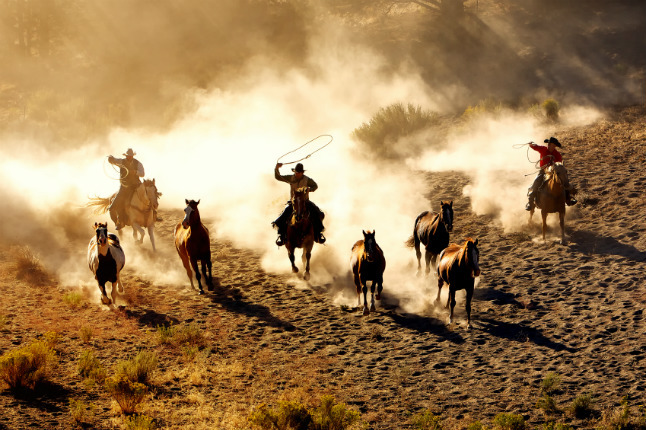Frederick Jackson Turner's classic 1893 essay, "The Significance of the Frontier in American History," argued that the frontier experience—the opportunity for unlimited expansion into "uninhabited" lands—shaped the country's entrepreneurial spirit. Turner's essay took on added significance because three years earlier, the Census Bureau had declared the frontier closed. The line that separated "civilized" from "uncivilized" was gone. Over the next few decades, settlers filled in the remaining pockets, but the era of limitless westward expansion that began in 1607 with Jamestown had ended.
No matter how accurate Turner's thesis was, in the succeeding decades, Americans were struck with what historians called "frontier anxiety." Because Americans no longer had the opportunity to settle and conquer wild lands, they looked for new outlets to recreate the frontier experience. The rise of organized sports, transcontinental expansion, and romanticized depictions of the era, like Buffalo Bill's Wild West Show, can be seen as attempts to preserve this development.
Today, the West faces the end of another frontier. Although extractive industries such as logging, ranching and mining were once the backbone of the region's economy, over the past four decades, new economic sectors have slowly eclipsed these Old West industries.
Tourism, technology and other service industries have consistently outpaced the region's traditional economic cornerstones. From 1970 to 2000, the income earned from professional and service industries in the West grew from over $250 million to almost $1 billion, while agriculture and mining remained below $50 million. In Montana, professional, technical, financial and business service industries added more than 30,000 jobs between 1998 and 2008, while farming and ranching lost almost 3,000. By 1980, only 17 percent of Idahoans were employed in agriculture or mining, and by 2009, that number had dropped even further, to 3.9 percent.
Without a doubt, a new frontier—one demarcated by job sector growth and net profit—has emerged and is slowly redefining the West's economy.
Along with this economic transition, the region has experienced a cultural transformation marked by increases in urban populations, changes in environmental values and public-land management, and a new flourishing of cultural institutions. Newer and bigger airports have been built to accommodate growing tourist traffic, second-home ownership in rural areas has surged, retirees have flocked to the region and ski resorts and sport utility vehicles have replaced working ranches and horses as more accurate symbols of the West. While Old West institutions remain entrenched in isolated pockets throughout the region, they no longer represent the West as they once did.
You might expect the region's politics to reflect this economic and cultural transformation, but just as late-19th century Americans wanted to find ways to relive the frontier experience, modern Westerners keep projecting the Old West's mythic imagery. It's a bid to claim authenticity even though it's no longer representative of the region. Wyoming Senators Mike Enzi and John Barrasso, for example, both use classic images of the American West—a herd of grazing horses against a backdrop of mountains and a vintage pickup truck driving down a rural two-lane road—as the desktops of their respective congressional web pages.
Western politicians not only strive to maintain a symbolic tie with Old West culture; the policies they pursue also demonstrate a refusal to let go of it, even when it's necessary. In Montana, bison restoration remains intensely controversial, with few politicians wiling to support it unequivocally because of objections from ranchers. Similarly, debate over wolf management has not seen a moment's rest over the past 20 years, even though wolves have brought an enormous amount of tourist dollars into Wyoming, Idaho and Montana because wolves also sometimes eat ranchers' sheep or calves. Finally, whenever a national forest's management plan is revised, the timber industry exerts much more influence than its small share of the region's economy ought to allow.
At the turn of the 20th century, Americans feared that the end of the frontier experience meant the end of American exceptionalism. Coast-to-coast settlement was the beginning of a slow countdown until we eventually became indistinguishable from Europeans. Today, many Westerners fear that the region's economic and cultural changes will lead the region to lose what has made it unique.
But it is time to face facts and relegate the celebration of the Old West to heritage days, parades and school textbooks. The 21st century West, though modernized, will not lose the wealth of natural resources that make it exceptional. And though extraction may once have defined the region, protecting our public lands—always vulnerable to excessive development—will best maintain the region's unique character.
–
